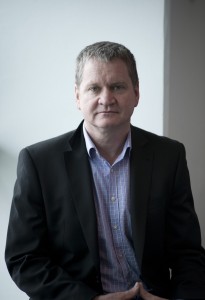Media
Travelling the Red Dirt road

Mark Skulley participated in APJC’s inaugural China Australia journalist exchange.
As soon as we arrived in Chongqing, one of China’s five national central cities, we were reminded by officials that Brisbane was now a sister city and direct flights had commenced from Sydney to this centre of China’s southwest.
A delegation of Aussie journos, we were taken to visit an upmarket hotel, the Auwi, which has Australian connections – and a copper Sydney Opera House mural behind the concierge’s desk.
In Beijing, the icebreaker in one meeting was that two officials at the table had children who were studying in Australia. Chinese journalists we met recommended some regional restaurants – in Melbourne.
It can be easy to place too much emphasis on the big picture when it comes to the commercial and political ties between Australia and China. Relations, so enormous in macro economic terms, still come back to individuals. One can’t overlook the importance of travel and education.
China was Australia’s largest export market for services in 2012-13 accounting for 12.7 per cent of total services exports worth about $6.7 billion. The big item was travel services worth almost $6 billion – comprising $5.6 billion of personal travel (which was mostly education-related) and around $400 million in business travel.
Furthermore, Australia is part of the overseas Chinese diaspora which has produced influential but little known players like businessmen George Wang, Chau Chan Wing and Jack Xiao.
(see http://www.businessspectator.com.au/article/2014/3/4/china/chinese-diaspora-dividend)
In Shanghai, official briefings on the welter of statistics about the city’s free trade zone were impressive but hard to visualise (and eventually soporific). But visiting the office where locals thronged to register new companies made statistics come alive: the atmosphere was buzzing with commercial hustle.
What was harder to understand though for our delegation was the symbiotic and overlapping relationship between the Chinese state, the Communist party and many institutions. For example, the executive of the Chongqing chamber of commerce were, in fact, government employees while the local business people were only on representative committees.
Then there was a briefing with the China Cultural Media Group, a state owned enterprise which is bankrolled by the Ministry of Finance. While promoting 5000 years of Chinese culture, its 17 subsidiaries are also “accumulating capital and achievements” for an initial public offering, possibly on the Shanghai Stock Exchange.
This journalist had to temper his Western impatience as official meetings ran their formal course through a round of greetings, tea and presentations from both sides – often from every person at the table. Late in the trip, I read advice from an old China hand that one should only partake of every second dish at business and political banquets, or risk expanding en route.
Finishedproduct Mark SkulleyThere was much small talk – and some direct disagreement. Several Chinese asked why Australia had security concerns over the giant Chinese telecommunications and IT company, Huawei. We replied the Australian government had unreleased advice from its intelligence agencies and that it came down to whether you trusted their word. “So you believe your government and I believe mine,” said one senior Chinese journalist by way of summary.
At another meeting, I asked a resource executive why his company had invested in the lower-grade magnetite iron ore deposits in Western Australia’s mid-west, around Geraldton, 430 kilometres north of Perth, rather than the higher-grade haematite ore found much further north in the Pilbara.
The executive gave me a pitying look and replied that the Pilbara deposits were locked up by the likes of Rio Tinto, BHP Billiton, Andrew “Twiggy” Forrest’s Fortescue Metals Group and Gina Rinehart, and the Chinese had been mostly been forced to look elsewhere for direct investment.
It was clear that the heavy cost and delays in developing these lesser regions is still a sore (and unresolved) problem. And that Rio’s decision to develop the Pilbara’s Channar mine as a joint venture with Sinosteel many years ago was a canny long-term move.
Again, there is much activity apart from the big resource projects. A new report by KPMG and the University of Sydney’s China Studies Centre found the Chinese investment profile is changing – a theme taken up in the latest ANZ insight report “Caged Tiger: The Transformation of the Asian Financial System”.
For the first time, in 2013 Chinese investment in Australia was not concentrated in the mining sector. The biggest deals were in electricity networks. There was also a shift towards a larger number of smaller to medium sized deals and a larger share of private Chinese investors, including in commercial property.
The big ticket for Australian exports to China is still iron ore (worth around $42 billion in 2013) with coal a long way behind in second place ($7.5 billion). Recent falls in iron prices have been offset by the huge volumes involved. Yet China has to change its production profile to reduce pollution by shutting its oldest and dirtiest plants.
This need to reduce pollution is now a state imperative. But the need to live and breathe is also very personal. I asked one Chinese editor about his main impression from two weeks in Australia and New Zealand, a reciprocal trip to ours. He replied that both countries were very clean and he hadn’t had to shine his shoes for an entire fortnight.
Apparently you can’t go that long in China.
Mark Skulley is one of Australia’s most respected business journalists, a veteran of more than two decades at Fairfax Media including the Australian Financial Review and a regular contributor to The Guardian Australia. He participated in the inaugural China Australia journalist exchange, run by the Melbourne-based Asia Pacific Journalism Centre. ANZ was a corporate supporter of the exchange.
ANZ has had a continuous presence in China since 1986 and since being locally incorporated in 2010 has opened branches in Beijing, Shanghai, Guangzhou, Chongqing, Hangzhou and the Shanghai Free Trade Zone. ANZ also has strategic partnerships with Shanghai Rural Commercial Bank and Bank of Tianjin.
Read the original article HERE.
